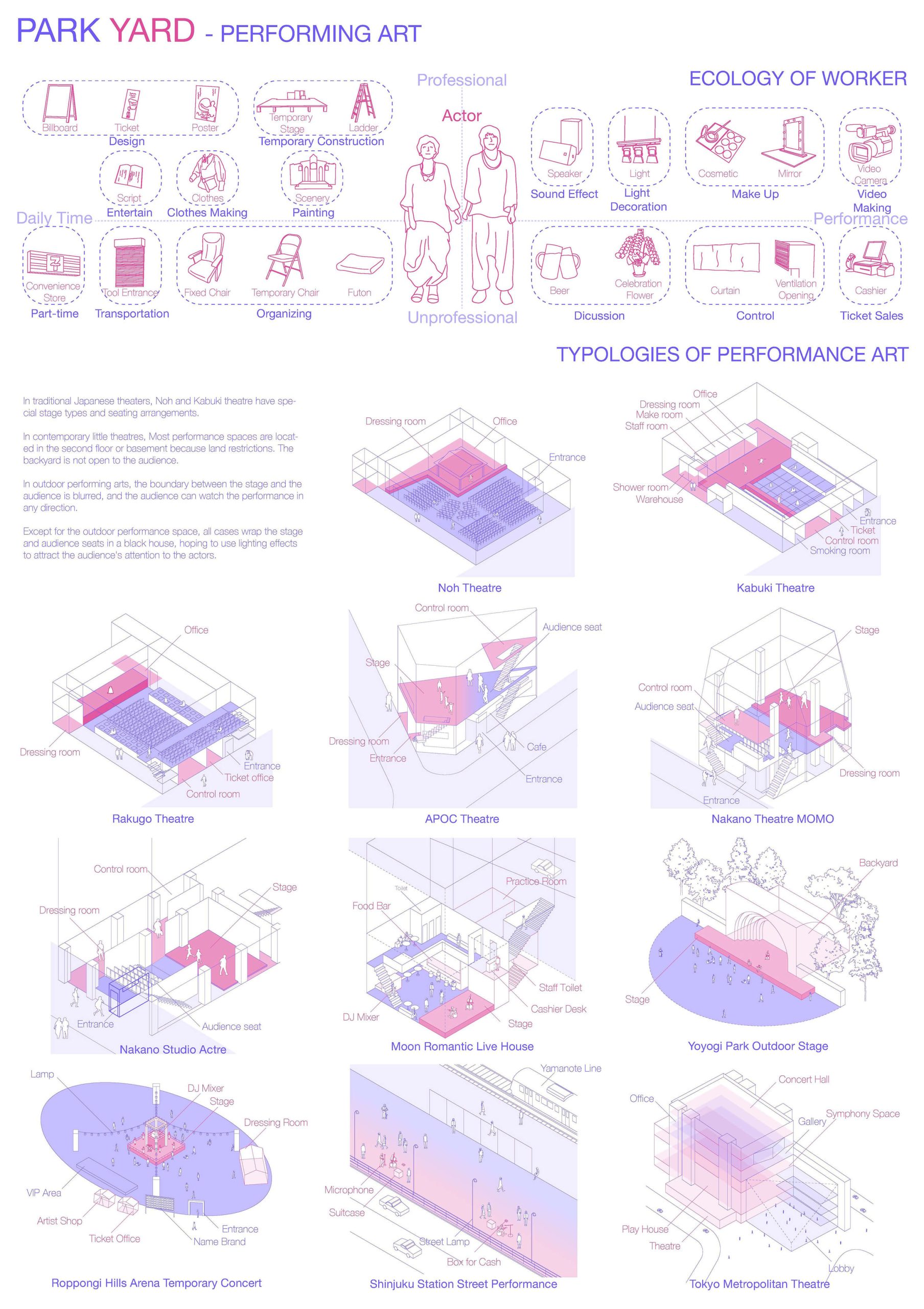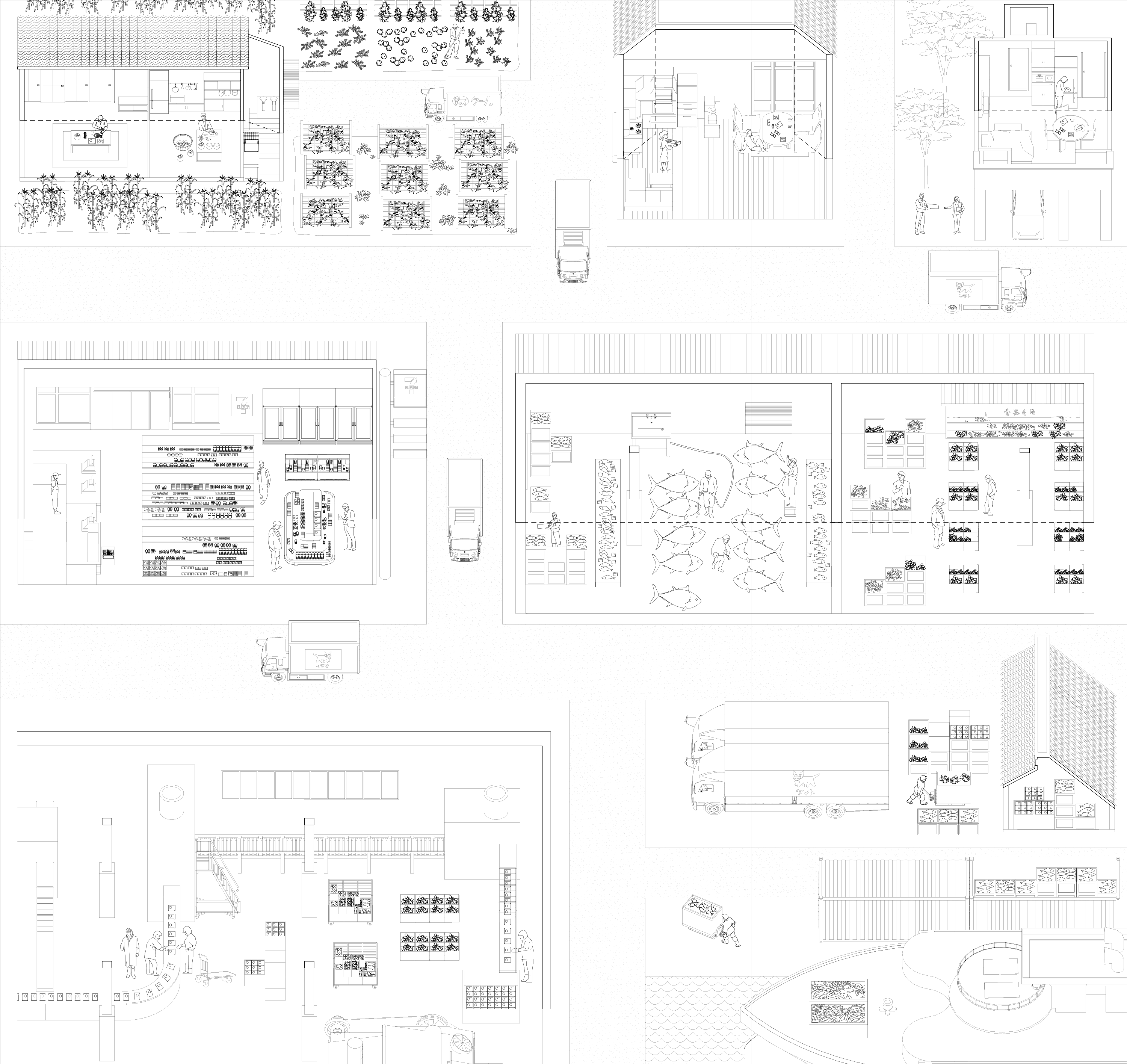The preparation process of the drama is usually hidden inside a closed small theater, which is only opened during performances. In the Covid-19 situation, a very small amount of performance makes the actor’s life difficult to sustain.
Taking this as an opportunity, we hope to release parts of the functions of the preparation process into the park and the open ground floor space as a workshop, with the intention of opening and displaying the process of drama preparation and sharing skills in cooperation with surrounding residents.
Student: Kai Zhang
Fridge
The history of food preservation throughout the last century-and-a-half reveals the key role refrigeration techniques have played in the development of an ever-expanding food network, in the process replacing a range of traditional preservation techniques by a single purely technical one. Cooling with ice, if available at all, remained the privilege of the more wealthy until the Meji Period, meaning that most food was either consumed rapidly or preserved by a whole range of methods, such as curing, salting, pickling, smoking, fermenting or drying. With the instalment of iceboxes and the dissemination of the electric fridge in the 1950s, food purchased fresh from the market, and from the 1960s on in supermarket chains equipped with refrigerators, such as Kanesue Co. Ltd., could be kept fresh at home. This form of preservation has dictated the ever-growing importance of the cool chain until today, whereby in recent years the ta-kkyuu-bin lorries, which deliver fresh food from the countryside to urban areas, have introduced a new form of distribution, thereby questioning the technological logic of the post-war food chain.
Balcony
The balcony extends the private realm to the outside and at the same time introduces aspects of the public realm into the intimacy of the apartment. This ambiguity is reflected, and even amplified, by the behavior of the inhabitants, who either appropriate the balcony as a space of inhabitation or, on the contrary, use it as a public stage. Similarly a privately owned place, its use is regulated in Japan by provisions, determining the possible activities that can take place or not on it. Triggered by the balcony’s status as a threshold space, users can easily exploit this ambiguity for transgressions, simultaneously revealing the ambivalent spatial status of this building element.

